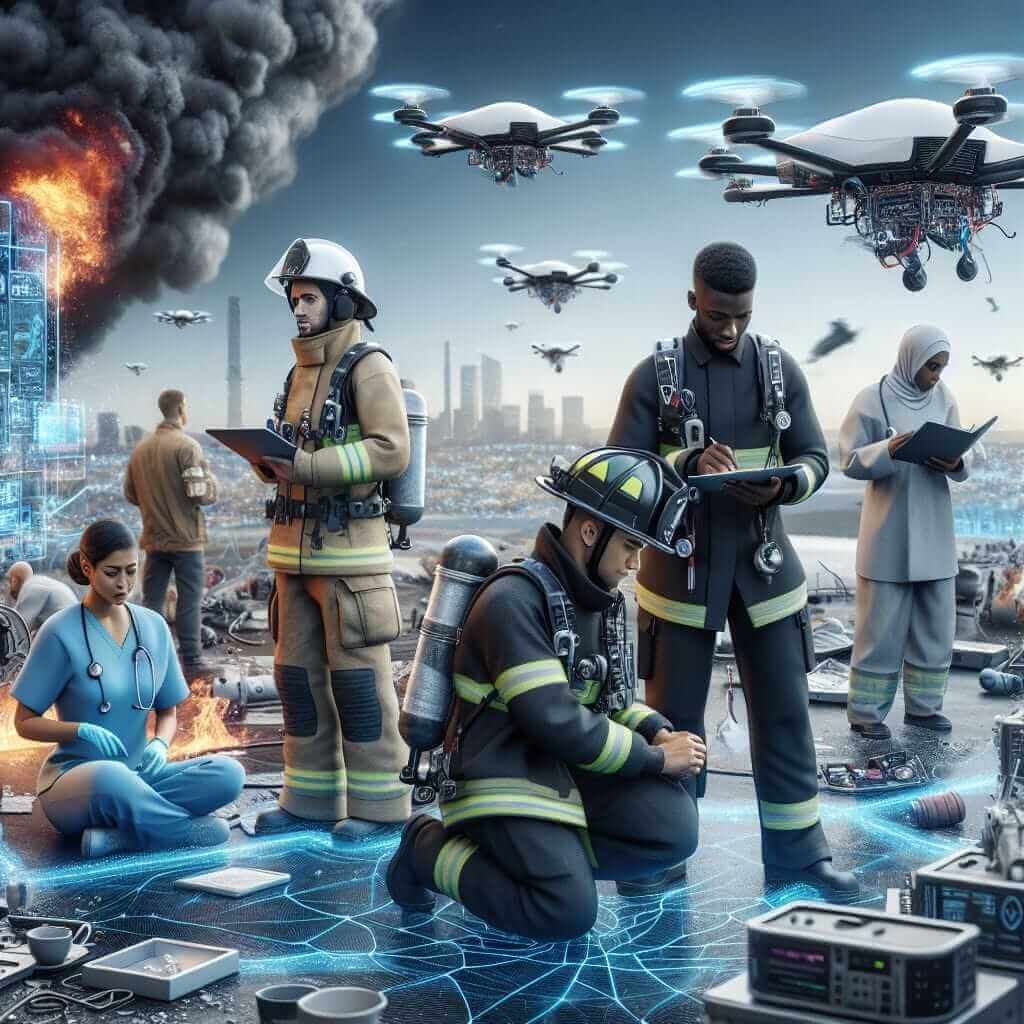The IELTS Reading section evaluates your ability to understand and analyze written texts. One of the prevalent topics in recent years is the application of artificial intelligence in various fields, including natural disaster management. This topic not only holds immense relevance in today’s technologically advanced society but also appears frequently in IELTS exams due to its contemporary significance. This article provides a comprehensive reading practice on “How is AI being used in natural disaster management?” designed to help you prepare for the IELTS Reading test.
Reading Passage: How is AI being used in Natural Disaster Management?
AI Transforming Natural Disaster Management
In the past decade, the role of artificial intelligence (AI) in disaster management has evolved significantly. AI technologies are now being deployed to predict, respond to, and recover from natural disasters more efficiently and effectively. This transformation is altering the landscape of disaster management, making it crucial to understand how AI is being utilized in this field.
Prediction and Early Warning Systems
One of the primary applications of AI in natural disaster management is in the area of prediction and early warning systems. Using machine learning algorithms and vast amounts of data, AI can predict the occurrence of natural disasters such as earthquakes, hurricanes, and floods. For instance, AI models analyze seismic data to forecast earthquakes, thereby providing early warnings that can save countless lives and minimize damage.
Response and Rescue Operations
In disaster response, AI has proven invaluable in enhancing rescue operations. Drones equipped with AI algorithms are used to assess damage, locate survivors, and deliver essential supplies to inaccessible areas. These drones can quickly process and analyze aerial images, enabling rescue teams to focus their efforts more effectively.
Disaster Recovery and Reconstruction
AI also plays a vital role in the recovery and reconstruction phases after a disaster. Through predictive modeling, AI can help in planning the rebuilding of infrastructure by identifying areas at higher risk of future disasters. This ensures that resources are allocated more efficiently and that new constructions are more resilient.

Questions
Based on the passage, answer the following questions.
Multiple Choice
-
What is one of the primary applications of AI in natural disaster management?
- A. Financial analysis
- B. Early warning systems
- C. Healthcare improvements
- D. Entertainment industry
-
In which phase of disaster management are AI-equipped drones used?
- A. Prediction
- B. Response
- C. Recovery
- D. None of the above
Identifying Information (True/False/Not Given)
-
AI models analyze seismic data to forecast hurricanes.
- True
- False
- Not Given
-
AI is only useful in the prediction phase of disaster management.
- True
- False
- Not Given
Short-answer Questions
- How do AI-equipped drones aid in rescue operations?
- What role does AI play in the reconstruction phase after a disaster?
Answer Key
- B. Early warning systems – AI technologies like machine learning algorithms and data analysis are primarily used for prediction and early warning systems in natural disaster management.
- B. Response – AI-equipped drones are deployed during the response phase to assist in rescue operations.
- False – The passage states that AI models analyze seismic data to forecast earthquakes, not hurricanes.
- False – AI is useful in multiple phases of disaster management, including prediction, response, and recovery.
- AI-equipped drones help in rescue operations by assessing damage, locating survivors, and delivering essential supplies to inaccessible areas.
- AI aids in the reconstruction phase by using predictive modeling to identify high-risk areas and plan resilient infrastructure rebuilding.
Common Mistakes
- Misunderstanding Passage Information: Many test-takers confuse the specific applications of AI in different phases of disaster management. Focus on the distinct roles AI plays, such as early warning systems, rescue operations, and post-disaster reconstruction.
- Ignoring Keywords: Pay attention to keywords like “early warning,” “response,” and “recovery,” which highlight the different stages of AI application.
Vocabulary
-
Seismic (adj.): Related to earthquakes or other vibrations of the earth and its crust.
- Phonetic: /ˈsaɪz.mɪk/
- Example: The seismic activity was closely monitored by AI systems.
-
Predictive Modeling (noun): A process that uses data and statistics to predict outcomes.
- Phonetic: /prɪˈdɪk.tɪv ˈmɒd.əl.ɪŋ/
- Example: AI employs predictive modeling to forecast natural disasters.
Grammar
- Passive Voice: Often used in formal writing to emphasize the action rather than the subject.
- Structure: [object] + [be] + [past participle] + [by subject] (optional)
- Example: “AI technologies are being deployed to predict, respond to, and recover from natural disasters.”
- Usage: In the context of the passage, passive voice helps focus on the action AI performs.
Tips for High IELTS Reading Scores
- Practice Regularly: Consistent practice with a variety of reading materials improves comprehension skills.
- Build Vocabulary: Familiarize yourself with technical and academic terms commonly used in IELTS readings.
- Develop Skimming and Scanning Techniques: Quickly identify main ideas and locate specific information.
- Answer Strategically: Answer easier questions first to ensure you secure those points and then focus on more challenging ones.
- Review Mistakes: Analyze incorrect answers to understand where you went wrong and how to improve.
By understanding how AI is being utilized in natural disaster management and practicing with this reading passage, you can enhance your skills and confidence for the IELTS Reading test.